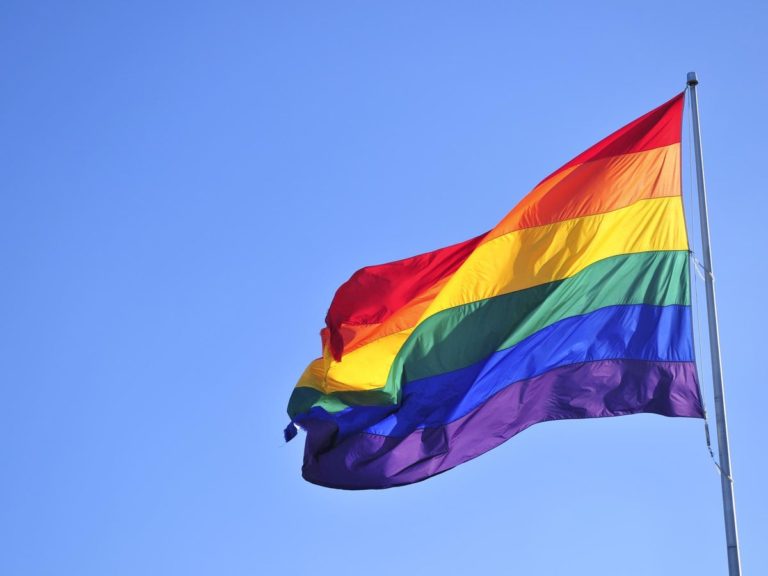

New Zealand Prime Minister Jacinda Ardern has vowed to ban conversion therapy if her party returns to power, as is widely expected to happen in the country’s upcoming election on 17 October. “It is a practice that causes harm and is out of place in the kind, inclusive and modern country we are,” said party leader Tāmati Coffey.
This adds New Zealand to the growing list of countries looking to outlaw conversion therapy, including Canada, Chile, Mexico and Germany (Brazil, Ecuador and Malta already have bans in place). But in Britain it is still happening, despite the government pledging to ban it.
The term “conversion therapy” covers a range of practices that falsely claim to change a person’s sexual orientation, gender identity or expression.
Despite all major UK therapy professional bodies and the NHS rejecting it and stating that it is dangerous, some practitioners continue to conduct conversion therapy.
In 2018, the government pledged to ban conversion therapy but this has not yet happened.
On 20 July, Boris Johnson described gay conversion therapy as “absolutely abhorrent” and said it “has no place in a civilised society, has no place in this country”.
“What we are going to do is a study right now on, you know, where is this actually happening, how prevalent is it, and we will then bring forward plans to ban it,” he said.
In response to his comments, the Ban Conversion Therapy campaign said: ”We’re delighted that Boris Johnson has listened to our calls for a ban on conversion therapy.
But, what exactly is conversion therapy and why is it still legal in 2020? Here is everything you need to know.
What is conversion therapy?
According to Stonewall, a charity that campaigns for the equality of lesbian, gay, bi and trans people, conversion therapy (otherwise known as “cure” therapy or “reparative” therapy) refers to any form of treatment or psychotherapy which aims to change a person’s sexual orientation or to suppress a person’s gender identity.
The practice is based on an assumption that being lesbian, gay, bi or trans is a mental illness that can be “cured”.
The Trevor Project, a charity focused on suicide prevention efforts among LGBTQ+ people, adds that conversion therapists use “a variety of shaming, emotionally traumatic or physically painful stimuli to make their victims associate those stimuli with their LGBTQ identities”.
How often does it happen?
A national survey of 108,000 members of the LGBTQ+ community suggested that two per cent have undergone the practice, with another five per cent having been offered it.
London Pride 2019: Best pictures by The Independent
Show all 60
Research conducted by Stonewall also found that one in 10 health and social care staff have witnessed colleagues express the belief that sexual orientation can be “cured”, which rises to one in five among health and care staff in London.
Similarly, a 2009 survey of over 1,300 accredited mental health professionals found that more than 200 had offered some form of conversion therapy, with 35 per cent of patients referred to them for treatment by GPs and 40 per cent treated inside an NHS practice.
Is conversion therapy harmful?
The American Psychiatric Association has clarified that “the potential risks of reparative therapy are great, including depression, anxiety and self-destructive behaviour, since therapist alignment with societal prejudices against homosexuality may reinforce self-hatred already experienced by the patient.”
The Pan American Health Organisation, a regional office of the World Health Organisation, concluded that conversion therapy, “lack[s] medical justification and represent[s] a serious threat to the health and well-being of affected people.”
The Trevor Project agrees, adding that conversion therapy “amplifies the shame and stigma so many LGBTQ+ young people already experience”.
In a study by San Francisco State University, lesbian, gay and bisexual youth who were rejected by their families and caregivers due to their identities were nearly six times more likely to report high levels of depression and more than eight times more likely to have attempted suicide when compared to youth from accepting and affirming families and caregivers.
Why is it still legal in the UK?
In 2018, it was announced that controversial “gay conversion therapies” were to be banned in England as part of a government plan to improve the lives of gay and transgender people. Ministers said the practice “must be stamped out” – with legislation if necessary – and described so-called “gay cures” as “abuse of the worst kind“.
However, two years later, it remains a legal practice.
A July 2019 progress report, which was published a year later, said a formal consultation was on the way, but none has yet materialised.
In May 2020, equalities minister Kemi Badenoch suggested that conversion therapy was “a very complex issue.”
“There are a wide range of practices which may fall within its scope and we want to ensure we have a thorough understanding of the situation in the UK to inform an effective approach.
”Before any decision is made on proposals for ending conversion therapy we must understand the problem, the range of options available and the impact they would have.”
Ms Badenoch continued: “We will work to deepen our understanding and consider all options for ending the practice of conversion therapy.”
In June 2020, more than 100,000 people signed an online petition calling for conversion therapy to be made illegal, while Stonewall asked the government to “urgently” publish its plans to “end these harmful practices”.
Conversion therapy is a devolved issue, meaning that Northern Ireland and Scotland will make up their own minds on a ban.
Has conversion therapy been banned in other countries?
The United States, Canada, Chile, Mexico and Germany are among countries seeking to outlaw the treatment.
Worldwide, only Brazil, Ecuador and Malta currently have national bans on conversion therapy.